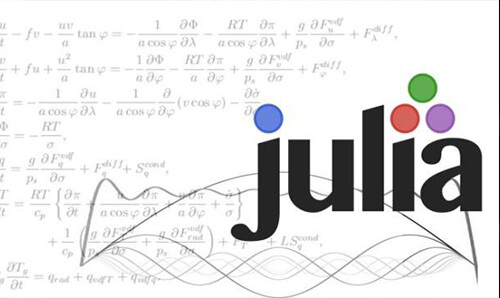5 Best Programming Languages for AI
Jul 22, 2021 12402 seen
AI Programming Languages
As AI improves productivity, product quality, and consumption, the biggest gains will be in financial services, healthcare, and retail. Artificial Intelligence is opening up a whole new world of opportunities for both enterprises and software developers, so if you're looking to take advantage of this opportunity, you might be wondering where to start. After being stagnant for several decades, artificial intelligence (AI) is undergoing a period of powerful acceleration. Depending on the demand for artificial intelligence skills more than doubling in recent years, a career in artificial intelligence has become a very attractive option for people interested in data science and software engineering.You might ask yourself questions such as what is the fastest path to a career in AI, or what is the best programming language for AI?
The answer to these questions will depend on your knowledge and experience, the type of AI project you are interested in, and current industry trends. There is currently no dedicated AI language dedicated to this area of technology, but it does support many popular programming languages. However, in order to increase your chances of quickly launching a career in AI, you need to learn AI programming languages that are supported by several machine learning (ML) and deep learning libraries.
The Best Programming Languages for AI
1. Python

For AI programming languages, Python is leading the way with its unparalleled community support and pre-built libraries that help accelerate AI development. For example, you can use proven libraries like sci-kit-learn for ML and use regularly updated libraries like Apache MXNet, PyTorch, and TensorFlow for DL projects.
When it comes to natural language processing, you can go old school with NLTK or take advantage of the lightning-fast SpaCy. Python is the leading programming language for NLP due to its simple syntax, structure, and rich text processing tool.
However, while it is sometimes called the best programming language for AI, you will have to ignore its five different packaging systems that are all broken down in different ways, some white spacing issues, and the gap between Python 2 and Python 3.
But by and large, learning Python makes sense as it boasts the most complete frameworks for both DL and machine learning. Since this highly flexible artificial intelligence language is platform-independent, you only need to make minor changes to the code to run it on the new operating system.
2. Java

Like some of the programming languages on this list, Java is also very user-friendly, easy to debug, and works across platforms without the need for additional recompilation. This is because its virtual machine technology allows code to run on all Java-supported platforms. When working with NLP, it is easy to find enough support from the dynamic community that is built around it. As Java provides seamless access to big data platforms such as Apache Spark and Apache Hadoop, it has cemented its place in AI development related to data analytics.
If you need more reasons to learn Java, consider the fact that it works seamlessly with search engine algorithms, improves user experience, and its simplified structure effectively supports large-scale projects.
3. Julia

Unlike the languages listed above, Julia is not a very popular language right now. As a result, it is not supported by many libraries or a fast-growing community.
However, its popularity as an open-source language is gradually growing.
One of the main advantages of working with Julia is its ability to translate algorithms from research work into code without any loss. This greatly reduces the risk of the model and improves safety.
Participating in AI programming with Julia reduces bugs and cuts costs because it combines the familiar syntax and ease of use of languages like C ++, Python, and R. This eliminates the need to evaluate a model in one language and reproduce it in a faster production language.
4. Haskell

Its popularity is mostly in academia, but giants like Facebook and Google are known to have used it as well. Haskell is used in research projects because it supports embedded domain-specific languages, which play an important role in the research of programming languages and artificial intelligence.
Haskell is great for engaging in abstract mathematics. Moreover, it allows expressive and efficient libraries to create AI algorithms.
While you can code these algorithms in any artificial intelligence language, Haskell makes them much more expressive than others while maintaining acceptable levels of performance.
It is also a great host for probabilistic programming and helps developers catch errors quickly during the compile-time iteration phase. Since Haskell is not very popular in enterprise environments, you cannot expect the same level of support as Java and Python.
5. Lisp

AI developers often turn to Lisp for AI projects that rely heavily on machine learning because it offers rapid prototyping capabilities, support for symbolic expressions, a library of collection types, and is very flexible and adaptable to their problem-solving needs. It is also popular among AI programming languages as it makes it easy to dynamically create new objects with automatic garbage collection. While the program is still running, you can also enable interactive expression evaluation and recompilation of functions or files at the same time.
However, in recent years, some of the key features that made it special have been ported to several other languages, so this is no longer such a unique opportunity in the AI world.


